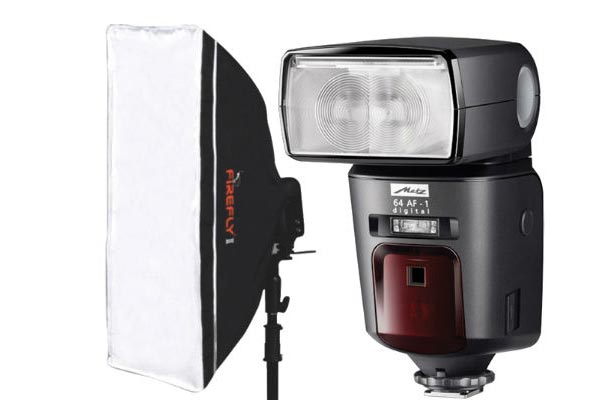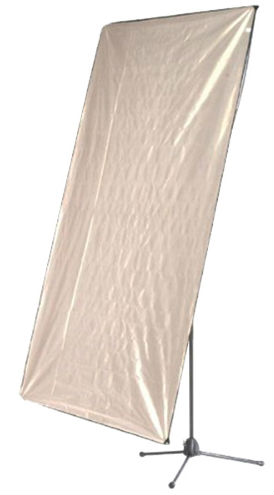 I’m a photographer who prefers natural light over flash because it looks more, well, natural. And for the most part natural looking photos are the most effective. The problem with flash, particularly on-camera flash, is that it’s very flat and boring, and tends to steal a lot of feeling and emotion from a photograph. The fact is, however, there are situations where there simply isn’t enough available (or ‘ambient’) light to make a decent photo, so either we use flash or we lose the moment.
I’m a photographer who prefers natural light over flash because it looks more, well, natural. And for the most part natural looking photos are the most effective. The problem with flash, particularly on-camera flash, is that it’s very flat and boring, and tends to steal a lot of feeling and emotion from a photograph. The fact is, however, there are situations where there simply isn’t enough available (or ‘ambient’) light to make a decent photo, so either we use flash or we lose the moment.
Max Your ISO
Ever before I reach for my flash I will push my ISO to the max, or at least the maximum value where the noise is somewhat acceptable. The ‘noise’ I’m referring to here is digital noise, which occurs when you increase the ISO on your camera, making the sensor more sensitive to the available light. Noise is visible as a kind of grainy, pixelated distortion which adversely affects your image quality, and is easily visible when you zoom in to 100% on an image shot at, say, ISO 1600 or above. High ISO capability is one of the areas in which cameras are always improving (check out this video shot by moonlight on a Sony A7) but there will always be situations in which you need to add some light, and this is where flash comes in.
Speedlights
In this post, I want to look specifically at speedlights, dedicated flash units that you can mount on your camera or alternatively use off-camera, like the Nikon SB-910 for example. Most professional photographers would not consider the pop-up flash that comes with a lot of cameras to be an adequate source of light. Speedlights are preferred because they have much more power and are far more versatile.
Bounce Flash
The first and simplest scenario I want to look at is where you have the speedlight mounted directly on your camera. As I mentioned earlier, when you point a flash directly at your subject you’re not going to get a very flattering type of light; it will look flat and boring. One of the things professional photographers like to do rotate the head of the speedlight and ‘bounce’ the flash off a nearby surface (like a wall or a ceiling) to make it more diffused and directional (to learn more about diffused, directional light check out my last post, ‘How To Shoot Portraits Like A Pro’). Bear in mind however that if you bounce off a non-white surface, you’ll probably see a colour hue in your final image.
Dragging The Shutter
Bounce flash is a good strategy when you’re shooting at an event or a wedding reception and you’re moving around a lot and you don’t have time to set up your speedlight off-camera. Another on-camera technique that I use regularly on the dance-floor at weddings is called ‘dragging the shutter’, where I will deliberately choose a slow shutter-speed, like 1/8th of a second for example. When the flash pops, it freezes the moment right in front of the camera, but while the shutter remains open some of the ambient light from the room registers in the image and you can get some really cool light trails. This is a great way to photograph people dancing because the overall effect captures some of the energy of the moment. This technique can also be achieved with a pop-up flash, so if that’s all you have, try it out – it’s a lot of fun.
Go Off-Camera
Whenever possible, I like to take my flash off-camera. You can do some really cool and creative things with your speedlights when you mount them away from your camera. First let me explain as briefly as possible how a speedlight works. When you put a compatible speedlight on your camera it uses a mode called ‘TTL’ (‘Through The Lens’) which allows it to meter the scene in front of the camera and (in combination with your aperture setting) choose an appropriate power output. It’s very clever technology. It is also possible to set the speedlight to manual and choose your own power output if you need to.
 TTL Cord
TTL Cord
The problem with moving your speedlight off-camera is maintaining the communication between the camera and the speedlight. The simplest solution to this is a TTL cord which connects the two, like the Energizer Multi-Fit TTL Flash Cord. A lot of event photographers will use a TTL cord so they can hold their speedlight up and slightly to one side to create a more interesting, directional light. If you want to create a professional looking portrait however, you’re going to need to diffuse the light too. You could use something like the Aurora Lighting Panel to bounce your flash, but my preference is to use mount my speedlight on a stand with an umbrella or a softbox, like the Aurora Lighting Firefly.
Master-Slave Speedlighting
Being attached to your speedlight can be very restrictive, so the next option for off-camera flash is the Master-Slave technique. In order to accomplish this you need two or more speedlights, one of which you will mount on your camera to act as the master unit which will send out a signal to the slave units mounted elsewhere. Not only will the master tell the slave units when to flash, it will also tell them what power to use. And you can choose to disable able the flash on the master so that it merely acts as the communicator between the camera and the remote units. Master-slave speedlighting is really useful, but it’s also quite technically challenging, and requires quite a bit of practice to master (pun semi-intended). The downside however is that you need to have a direct line of sight between your master and slaves, which is fine if you’re shooting a static portrait, but if you’re moving around at an event, things can be hit and miss.
Off-camera flash is something that a lot of photographers find intimidating, but the reality is that if you want to do really good event photography, or shoot corporate portraits or headshots, it’s something you’ll have to get to grips with sooner or later. I’ve really just scratched the surface today to give you an introduction and some ideas on how to move forward, but if you’re interested I would advise you to do a little more research and start practicing.
If you have any questions, please feel free to leave a comment below.




I love flash…. some additional thoughts…
iTTL/eTTL metering. When buying a flash… stick to your camera brand name. Flashes today are much more intelligent than what they were decades ago as it talks to the camer and lens.
A variation of off camera flash is to use a flash bracket. I love flash brackets to avoid side shadows. My fav brand is CustomBrackets, but here’s an affordable one…
http://www.bestbuy.ca/en-CA/product/rocketfish-rocketfish-collapsible-flash-bracket-rf-cfb01-rf-cfb01/10219661.aspx
Comments are closed.